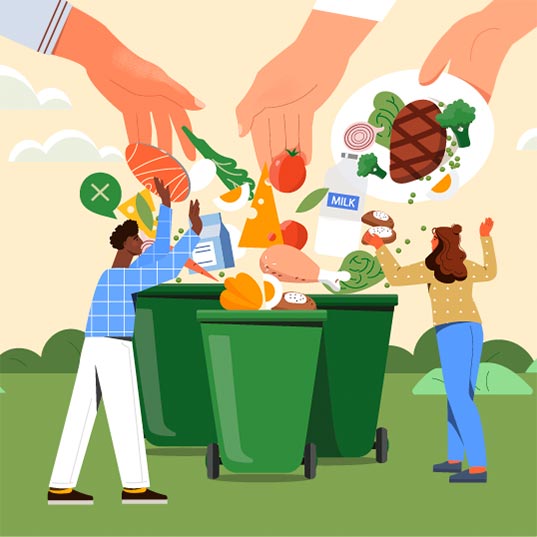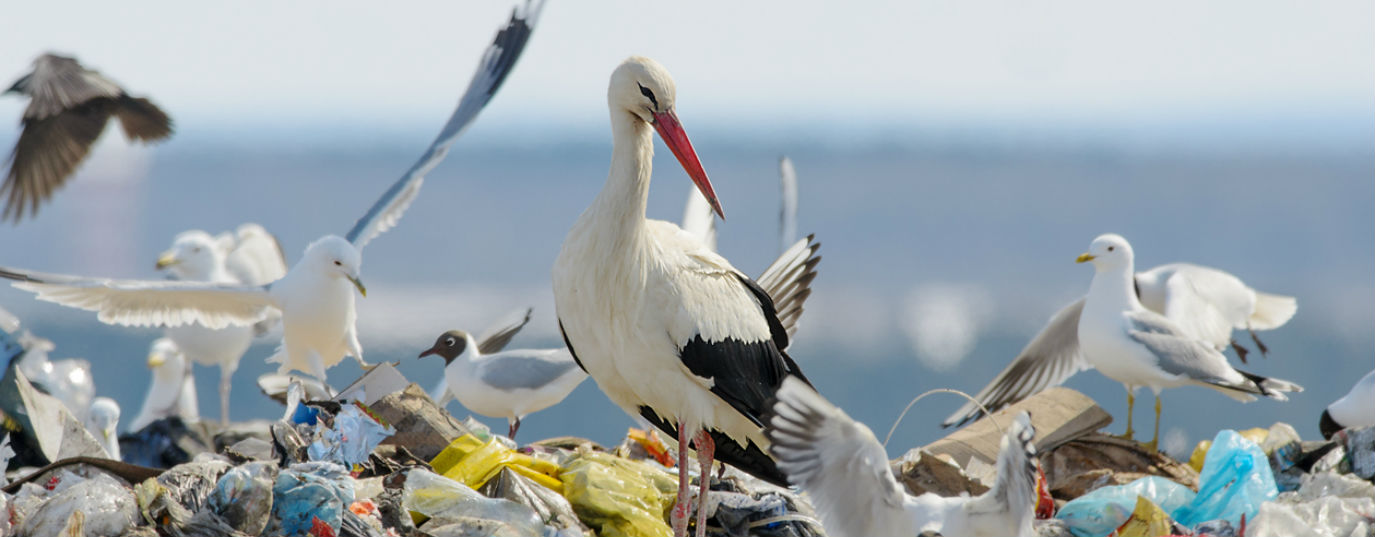Food waste, or treating the planet’s resources as trash
Food waste is one of the worst problems humanity faces. Alleviating it will not only help the fight against hunger, but climate change too.
“Hunger is a curse that comes every day, and the stomach is a bottomless pit, a hole as big as the world,” wrote Paul Auster in In the Country of Last Things. And, beyond the pages of this novel, this chasm continues to get bigger. Hunger in the world is increasing, while a third of all foods produced worldwide are thrown in the trash.
This is not only a problem affecting the lives of hundreds of millions of people, it has big implications for climate change. We all have a role to play in reducing food loss, not only for people’s wellbeing but also the planet’s resources we’re squandering.
What you’ll find out from this article:
- What’s defined as food waste?
- How does food waste affect climate change?
- What can we do to stop food waste?
What’s defined as food waste?
 According to the Food and Agriculture Organization (FAO) of the United Nations, food waste refers to the decrease in the quantity or quality of food resulting from decisions and actions by retailers, food service providers and consumers. Food can be wasted in many ways:
According to the Food and Agriculture Organization (FAO) of the United Nations, food waste refers to the decrease in the quantity or quality of food resulting from decisions and actions by retailers, food service providers and consumers. Food can be wasted in many ways:
- Fresh products which, for their form, size or color, are not considered optimal for sale (even though they have retained their quality) are removed from the supply chain. In other words, they remain unsold and are thrown away.
- Food which is close to or beyond its best-before date is often thrown away by retailers or consumers. A fundamental error, since the best-before date is not the same as the expiry date, as we’ll see later.
- Whether it’s in restaurants, canteens or the kitchen at home, food leftovers are often unused, ending up in the trash.
Less loss and wastage of food will lead to more efficient land use and better management of resources such as water and energy, which would help stop climate change and guarantee life on the planet.
How does food waste affect climate change?
The global population continues to grow and with it the greater exploitation of natural resources. This is simple math. The more people there are, the more water, food and agricultural land we need. Satisfying this increase means we must change our focus to more sustainable production and consumption.
Today, the world throws away 17% of the food it produces, while 811 million people go hungry. Food that is not consumed represents a waste of resources such as land, water, energy, soil, seeds and other inputs used for its production.
“The world throws away 17% of the food it produces, while 811 million people go hungry”
Moreover, the UN Environment Programme (UNEP) estimates that between 8 to 10% of global greenhouse gas emissions are associated with food waste.
To feed the world sustainably, producers need to cultivate more food, but they could do so while reducing negative environmental impacts such as the loss of soil, water and nutrients, greenhouse gas emissions and ecosystem degradation.
Meanwhile, as consumers, we can promote and buy more food produced according to such criteria, while also pursuing more nutritious, safer diets with the least environmental footprint possible.
“Between 8 to 10% of global greenhouse gas emissions are associated with food waste”
What can we do to stop food waste?
All those involved in the production and consumption of food can collaborate in one way or another to avoid food waste.
Avoid food waste in stores and restaurants
All agents in the food chain should have a food waste prevention plan, one of the main actions being food donations of those products they can’t or don’t wish to sell. Foods donated will need sufficient useful life to be stored, distributed and arrive at final destinations in good condition.
Another possibility is to transform the food into juices, marmalades, etc. When they are no longer apt for human consumption, foods can be used as sub-products directly for, or for the manufacture of, animal feed; also in industry and for compost production, etc. Food chain agents will need adequate facilities and to train personnel for the processes of handling, storing and transporting leftover food so as to minimize losses.
Another idea for stores, is that those products past their best-before date are offered to the consumer separately, and differentiated from the rest of the products, at a lower price. Restaurants and cafés can also offer their customers the possibility of taking away, without any additional cost, the food they didn’t consume in situ.
What can you do as a consumer?
The loss and waste of food has become a subject of great public concern. The UN’s 2030 Sustainable Development Agenda reflects greater awareness about the problem worldwide. Want to know what you can do to help? Here are some tips from the FAO about how to avoid and reduce food waste:
- Be realistic: plan your shopping list ahead in relation to how you are going to eat the food. If you’ve only invited 5 people for dinner, don’t cook for 50!
- Store food correctly: perishables like milk products, fruit and vegetables should be kept in the correct compartments in the refrigerator. Meat and fish can be stored in the freezer if you have no intention of using it immediately. Dry food should be stored in sealed containers and, alongside other canned food, in a cupboard or pantry.
- Remember the difference between the expiry and best-before dates on food labelling.
- Allow diners to serve themselves: it’s possible you don’t know how much your guest can eat, and generally we tend to give more, simply out of courtesy, and end up throwing away what’s not eaten.
- Freeze leftovers or share them with others.
- Make lunch or dinner the day after using the leftovers.
- Finish the leftovers before cooking a new dish.
A more sustainable world requires a more sustainable use of resources. Let’s be aware of what we do with the food we buy and consume - and introduce the right measures to avoid slinging it as garbage.
Sources:
https://www.fao.org/food-loss-and-food-waste/flw-data
https://www.sostenibilidad.com/vida-sostenible/desperdicio-de-comida-que-es-y-como-evitarlo







